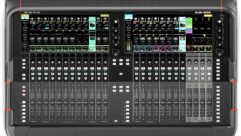The Convergence of V and IT
Sep 1, 2003 12:00 PM,
Jerry Gale
If you attended InfoComm this year, you heard a lot about the convergence of A/V and IT. In fact, that convergence has been a hot topic for the past several years. So far most discussions have focused on the technology involved (now that we have put an Ethernet port on the projector, what do we do with it?) and its effect on the A/V department. This year, however, two Infocomm events focused on how the convergence may affect the future of professional A/V integrators.
Those events were the Manufacturers’ Forum and a breakfast. The discussions can be summarized like so: the convergence of A/V and IT is bad for the pro A/V integrator.
Those meetings emphasized a simple message: as more A/V products are connected through a local area network (LAN), more corporate IT departments will design and install the system rather than hire a pro A/V integrator. As we all have felt, corporate A/V sales have been down for the past couple of years. Conventional wisdom at Infocomm was that the slowdown is not a temporary slump that can be blamed on the economy but a permanent reduction in corporate business due to a change in the paradigm of A/V installations.
The pro A/V industry may be experiencing the same change in business that data network integrators experienced in the early to mid-’90s. At one time, companies such as Inacom and BusinessLand were making lots of money designing and installing LANs. Eventually, corporate IT departments realized that they could design and install the networks themselves and that they just needed to buy the hardware at three to five points above costs. The result? No more LAN integration companies. So how can the pro A/V industry avoid that fate? I have two suggestions.
First, we need to emphasize the audio in A/V. This industry has been driven by the changes in the high-dollar display products for several years. That is safe ground for the IT departments. They understand VGA, XGA, and SXGA, but what they don’t understand is audio. They are more interested in disaster recovery plans than microphones, speakers, and amps. Most IT departments are willing to use the built-in speakers on the projector. They’re not concerned with audio, and they would prefer it if audio requirements were insignificant. In other words, we are not experiencing the convergence of A/V with IT. It is the convergence of V with IT.
What we know and they don’t is that audio is just as important as video for effective presentations and videoconferencing meetings. People will tolerate fuzzy video, but if the audio is bad, they want to hang up and call again, like they would with a telephone. Unfortunately, hanging up and redialing a videoconference call is not as easy as a telephone. To prevent IT departments from taking over the industry, A/V integration and design companies should stress the advantages and benefits of integrating high-quality audio systems for corporate boardrooms, conference rooms, and training rooms.
Our industry is really two markets: the corporate market and the performance market. The performance market requires large-scale audio systems for entertainment venues like stadiums, arenas, auditoriums, theaters, casinos, and theme parks. Because this market is dominated by audio systems, the convergence of IT and A/V isn’t doing any damage. There was little discussion of convergence at this year’s NSCA Expo, which is a convention more for the performance market than the corporate market. A/V industry growth will continue to be driven by the expansion of the performance market.
That’s the good news. The bad news is that it’s becoming more difficult to remain profitable. The bidding process drives down profits, the bonding process is more difficult, and the progress billing schedule severely affects cash flow. Project schedules slip, which causes A/V installations to be expedited with no increase in compensation.
To keep the performance market as the growth engine of the A/V industry, design companies must work with the owner’s reps. We need to move away from automatically awarding a project to the lowest bidder. We need a standardized process that prequalifies integration companies. In an ideal world, the A/V design company and the A/V integration company would collaborate from the beginning for large performance integration projects.
Will audio technology ever again drive the A/V industry? The answer is yes — and it is happening now.
Jerry Galeis vice president of marketing for SPL Integrated Solutions (www.splis.com). He can be reached at[email protected].










